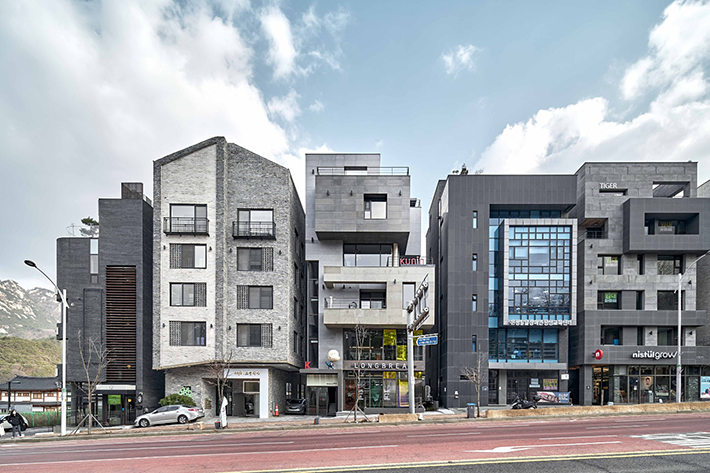Modern-day civilization has flourished with new designs and expressive colors. As design flourishes, architecture is becoming increasingly creative day by day. However, today’s architecture ironically involves applying similar looks or structures. Also, as people seek societal attention, radical architectural designs are increasing as there are more and more people who copy the work of famous architects or large franchises. Korea’s Misa library is a great example of this trend, following the work of famous architects and using a radical design that is causing problems in terms of construction, cost, and maintenance. Moreover, radical architectural designs are hard to actually produce and involve safety concerns.

To get a professional opinion on this issue, I interviewed Nam Ji Yeon, an architect with Seoul City, who designed Eunpyeong Hanok Village. I asked her how architectural design affects the time and cost of building construction. She answered, “Original and unusual designs indeed increase the construction period and the associated cost. Still, rather than buildings with ordinary designs, people prefer unconventional designs to facilitate sales and leases.”
I then asked Nam about the problems of excessively radical design and design theft, which are currently an issue in modern architecture. She answered,
“Radical designs increase design complexity, which leads to difficulty in construction and causes safety issues as it increases the chances of buildings being constructed with improper proportions.” She also said that excessive designs, reflecting the unreasonable demands of building owners, often create a sense of alienation between the buildings and their surrounding environments and involve many design elements that have already been tried in other structures, resulting in plagiarism controversies.”
She also said that some architects use radical designs or engage in plagiarism as the risk of other people's lives because they desire fame or fear that they will not get design orders if they reject the demands of the building owner. In general, clients ask the architect to emphasize the design, so architects end up designing buildings that are more focused on design than safety or harmony with their surroundings. In extreme cases, they intentionally ignore safety issues for the sake of design completeness. It is urgent not only to change the social perception but also to establish a legal system to solve these problems.

However, there are still many cases of architects using radical designs that threaten lives and copying other architects’ work instead of using such work as their inspiration.
Indeed, copyright in architectural design is a grey area where it is difficult to judge whether a design was copied or not. However, it seems that the risk has become so high that we cannot leave it to conscience alone.
An example of a safety issue caused by design is Dongdaemun Design Plaza (DDP), an all-white structure with lots of curves. Kwang-soon Kim, the CEO of a service design company, pointed out a safety issue caused by the DDP’s design, saying that the new design may seem luxurious and unique, but can be unsafe because people may lose their sense of direction due to the excessive use of white paint everywhere.
Now that radical architectural designs are becoming a problem in terms of safety and plagiarism, society will need to start to regulate and prevent such designs from being introduced to prevent losses of time, money, and effort, along with our safety.

Seungmin Han
10th grade
Korean International School Jeju

